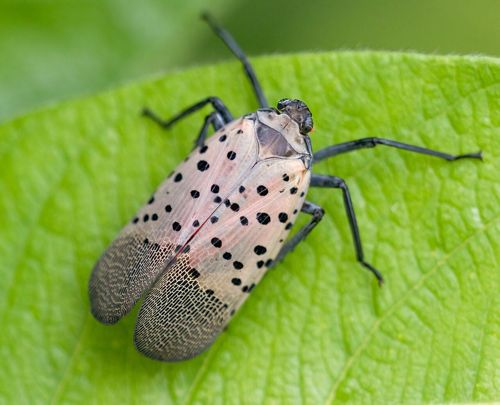Spotted Lanternfly
Scientific Name: Lycorma delicatula
Order & Family: Hemiptera, Fulgoridae
Size: Adults are approximately 1 inch (2.5 cm) long and 0.5 inch (1.2 cm) wide.

Natural Habitat
Found on a wide variety of plants and trees, particularly the Tree of Heaven (Ailanthus altissima), grapevines, fruit trees, and various hardwood trees. Prefers vineyards, orchards, and forests. Native to China, India, and Vietnam, but an invasive species in other regions like the United States.
Diet & Feeding
Feeds on the sap of over 70 different plant species by piercing the bark with its mouthparts. It is a phloem-feeding insect.
Behavior Patterns
Spotted Lanternflies undergo incomplete metamorphosis with four nymphal instars before becoming adults. They are known for congregating in large numbers on host plants. Adults are active from July to December, laying egg masses in the fall which hatch the following spring. They excrete a sugary substance called honeydew, which can promote the growth of sooty mold.
Risks & Benefits
Potential risks: The Spotted Lanternfly is a significant invasive pest that poses a serious threat to agriculture and forestry. It can cause tree mortality, stunt growth in crops like grapes and fruit trees, and is a nuisance due to the honeydew excretion and resulting sooty mold which can cover plants, outdoor furniture, and vehicles. There are no known benefits to the ecosystem in invaded regions; rather, it disrupts natural ecosystems and economies.
Identified on: 9/22/2025